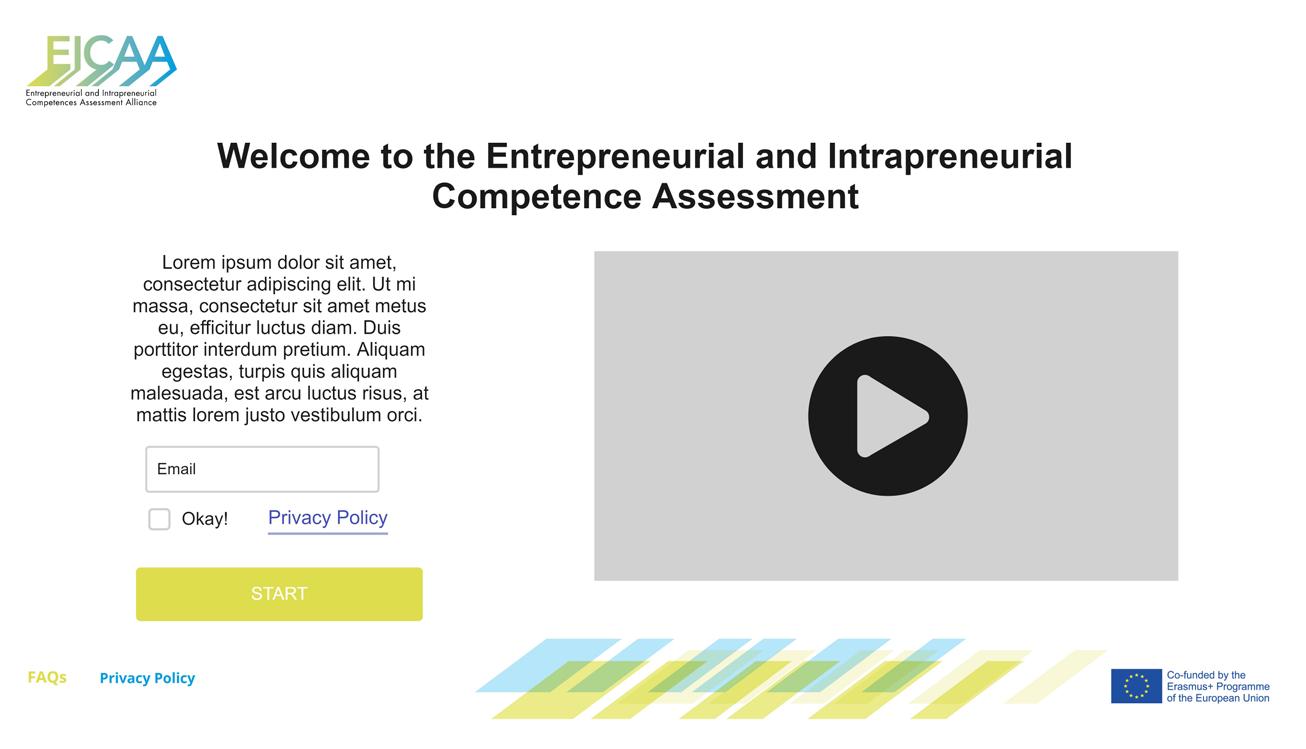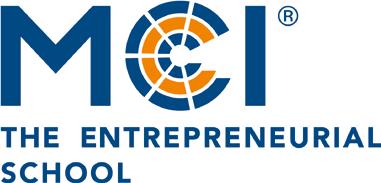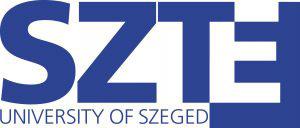MAGAZINE

THE IMPLEMENTATION OF THE EICAA PILOT ROUND


















The project “Entrepreneurial and Intrapreneurial Competences Assessment Alliance” (EICAA) is an Erasmus+ Knowledge Alliance funded for 3 years. It develops a digital platform for the self-assessment and development of entrepreneurial competences. This will enable universities, companies and other organisations to monitor and develop entrepreneurial competences among learners more efficiently.
During this third and final year of the project, the development of the EICAA Digital Platform – the main output – is in its final stage. To foster entrepreneurial competences appropriately, it is vital to know which competences need more attention than others. Exploiting the instruments of the EICAA Digital Platform enables entrepreneurship educators, coaches and managers to understand the entrepreneurial competence profile of their learners better. To do so, they can rely on an empirically validated self-assessment developed by the EICAA consortium. Moreover, the platform provides an analytical visualisation of the self-assessment data which sums up the competence profile of the assessed group. We call this data driven instrument the Competence Monitor.
After a self-assessment has been concluded, the platform also suggests teaching and training activities for addressing those competences where the group under consideration has scored lowest. This feature of the platform facilitates targeted entrepreneurship education even further. It works on the basis of a comprehensive set of teaching and training materials that have been carefully compiled by the EICAA consortium for 19 entrepreneurship competence along 4 different proficiency levels. We call this repository the Competence Development Kit.
By offering a free technical solution that integrates competence self-assessment, data analysis as well as guidance and inspiration for competence development, our
“Without good information on entrepreneurial competence levels of learners, it is difficult to match actual entrepreneurial learning needs to corresponding education and training offers. Our project EICAA has been designed to tackle this ‘blackboxlike’ phenomenon.”
FLORIAN BRATZKE
consortium is convinced that the EICAA Digital Platform provides a new value to entrepreneurship educators and trainers in the EU and beyond. While the vision to establish such innovative solution has been the main driver to join forces within EICAA at the beginning of 2021, it has almost taken three years of time and dedication to develop its first version.
This said, we invite you to read the fourth issue of our electronic magazine which provides insights on how the digital platform was set up as well as how it was tested throughout Europe within the EICAA Pilot Round.
Enjoy your reading!
Strengthening entrepreneurial competences of students, academic staff and employees in Europe.
“EICAA seeks to assess, analyse, and develop entrepreneurial competences among university students and staff as well as among employees of the corporate sector.”
“By building a digital platform, university and industry stakeholders will be enabled to assess and analyse the level of entrepreneurial competence within their organisation. Furthermore, suitable education and training interventions will be provided to accurately address specific entrepreneurial competence development needs.”

Adsata is responsible for prototyping, planning and documentation of the EICAA Digital Platform (DP). In this sense, Adsata acts as a bridge between the technical and the non-technical partners in the project to take ideas and vision, and convert them into a technical roadmap for the developers to achieve the desired results. In addition, Adsata is also leading the documentation of the platform.
Evista is responsible for all technical related tasks of the project. They have created both the visuals and developed the EICAA website, designed the platform’s UI based on the inputs from various partners and created the digital platform itself based on Adsata’s directions. Evista’s roles apart from the development included the technology selection, security and privacy considerations, testing and quality assurance as well as deployment.
The aim was to take the outputs from the previously elaborated results in the project (i.e. the Competence Monitor and the Competence Development Kit → CDK), and to transform them in to the EICAA Digital Platform, where users can create self-assessments, collect/analyze data, and then act on the suggested CDK modules to improve the entrepreneurial competence profile of their assessment groups.
Additionally, this part also involves documenting the software for the user, and maintaining the software as an Open Source software for any future stakeholders.
In the first step, Adsata organized workshops for partners to produce user stories for EICAA-DP. User stories captured the requirements and functionalities of the EICAA-DP from the user’s perspective. They described the interactions and features the app should provide. User stories helped the development team understand what needs to be built and served as a basis for further design and development decisions.
Collection of user stories and user story mapping





The next step was to take the user stories and create visual representation of what the platform would look and function like. Mockups were the visual representations or wireframes of the EICAA-DP’s user interface. They provided a high-level overview of the app’s layout, design elements, and functionality. These mockups helped partners visualize the app’s structure and flow, ensuring a common understanding among the team before proceeding to the next steps.
Once the mockups were approved, the design process began. The first design stage involved creating detailed designs that incorporated the visual elements, branding, and aesthetics of the EICAADP. Designers from Evista used design software or tools to produce graphical representations of each screen and interaction, including colors, typography, icons, and images. These designs provided a more accurate representation of the final product’s look and feel.

The process of the development of the EICAA-DP was outlined in a planning document, where the specifications of the entire tool were outlined in a stepwise manner and also roles/ responsibilities were fixed to each partner involved.
After the first design was approved, the development phase began. This involved writing the code necessary to implement the functionality described in the user stories and design specifications. Developers used programming languages, frameworks, and tools to create the front-end (client-side) and back-end (server-side) components of the EICAA-DP. This step included building the user interface, implementing assessment logic, integrating databases, and handling any necessary APIs or external services etc.

The EICAA Digital Platform has two active environments to let the partners preview and use the features.
The staging environment has the most up to date set of features, which reflects the state of the development. The features included here can be subject to more or less substantial changes until they get their final form based on the points considered from the valuable feedback of the partners. Given these circumstances, many of the corresponding features are not accessible at all in the live environment (e.g. Competence Monitor, Competence Development Kit, Recent Activity chart and sharing with QR code), or they are present in a former, less developed state (Results Dashboard).

The live environment has the key features (creating, sharing, deand reactivating assessments) to let the partners manage piloting rounds, which help the collection and evaluation of the data acquired in compliance with the goals set for the platform (the data collection process for the participants is already long established). The platform users have the ability to export the collected data related to the assessments they own. The data can be exported in csv format – and there is also a temporary solution based on an Excel workbook template, but this feature will be discontinued once the development of the Competence Monitor concludes.
EICAA aims to develop a digital platform for the assessment and development of entrepreneurial competences. This will enable universities, companies and other organizations to carry out profiling and monitoring of entrepreneurial competences (e.g. among students or employees).
The platform aims to deliver an impartial evaluation of users’ existing entrepreneurial competences, highlighting both their strengths and weaknesses. This assessment serves as a valuable tool to identify areas that require improvement. By offering a convenient and cost-efficient alternative to attending physical courses or workshops, the platform empowers users to enhance their competences effectively.
The platform’s success hinges on two essential factors: acquiring a sufficient volume of user data and attaining a critical mass of users. These elements are crucial for the platform’s sustainability beyond the development phase. If we reach the number of people using the platform, the next question can be what else we can do with the data gathered on the platform, it is something that can be discovered in a separate project.



15 study programmes
300 students 50 % foreign students

AMS is leading the work on the EICAA Competence Monitor. The main activities were:
a. Establish a (self-)assessment rubric to determine entrepreneurship competence achievement of HEI students and employees or practicing entrepreneurs
b. Design and prototype competence assessment instruments
The alignment of the survey with students’ coursework and consideration of timing constraints emerged as a pivotal aspect during the planning phase. Ensuring that the survey did not coincide with significant exams was of utmost importance. To address this, we strategically integrated our survey with the Global Leadership Skills (GLS) opening day of the Full Time Master’s program at AMS. The GLS initiative aims to cultivate leadership capabilities among students, fostering collaborative work and a steadfast commitment to a sustainable future. Given our objective to reach the entire cohort of the Full Time Master’s program, encompassing diverse fields of study such as Innovation and Entrepreneurship, Finance, and Human Resource Management, extensive coordination with professors and program managers was necessary to maximize survey participation.
In the pilot round involving employees, or “intrapreneurs” in AMS lingo, we endeavored to employ a similar approach by intertwining the pilot round with a Design Thinking Masterclass targeting professionals from various sectors across Belgium. Regrettably, due to timing constraints, this could not be pursued. As an alternative, we went ahead with the approach of getting AMS employees to fill the survey.
Students: Approximately 250 students from the esteemed Full Time Master’s program at AMS were engaged in our study, resulting in commendable 49 responses. As part of their Global Leadership Skills (GLS) opening day, Dr. Wouter Van Bockhaven, the lead of the work on the EICAA Competence Monitor, addressed all students, some in person and some online, and delivered an impactful presentation elucidating the significance of entrepreneurial competences and how our EICAA framework can facilitate their measurement and development. The students were then asked to fill in the survey while being with us in the meeting.
Given the objective to reach the entire cohort of the Full Time Master’s program, encompassing diverse fields of study. extensive coordination with professors and program managers was necessary to maximize survey participation.

Employees: For employees, we reached out to the entirety of AMS’s workforce, comprising over 100 dedicated professionals. Within 3 days, we received about 10 responses, giving us a 10% response rate already. The cohort of the target audience represented diverse spheres within the organization, encompassing teaching staff, administrative personnel, researchers, marketing professionals, and finance experts, among others.

Given the supportive relationship between students and their professors, the task of having students fill a survey becomes comparatively more feasible, accompanied by an increased likelihood of their cooperation, thereby augmenting the overall quality of survey responses. Moreover, students’ inherent commitment to ongoing learning and growth nurtures a receptive disposition, and hence a similar approach can be used to convince all of them. Capitalizing on this advantage, it is possible to administer the survey within a controlled classroom setting, fostering a conducive environment that heightens response rates.
Conversely, the diverse functions encompassed by employees within the organization necessitate tailored strategies for each group in order to highlight the correct value proposition. Furthermore, given the pressing demands of their daily work responsibilities, survey participation assumes a lower priority in the hierarchy of tasks for employees.
Students: The outcomes derived from the pilot round provide valuable insights into quantifying the impact of a transversal programme like GLS, which traditionally poses challenges in terms of assessment. This empirical evidence enables us to delve into
Approximately 250 students from the esteemed Full Time Master’s program at AMS were engaged in the study, resulting in a commendable response rate of 49 participants.
“Drawing upon the insights obtained from the pilot round, we attain a comprehensive assessment of the staff’s current proficiency level, establishing a baseline measurement. This invaluable data empowers us to discern the optimal learning and development trajectory for employees.”
the intricacies of students’ competency gaps, thereby facilitating the design and implementation of targeted electives. By leveraging the diverse modules available on the platform, we can effectively address and bridge these identified gaps, fostering a more holistic educational experience.
Employees: In adherence to the regulatory framework mandating companies in Belgium with a workforce surpassing a specified threshold to submit an education plan for their employees, we align our approach with AMS’ foundational principles of entrepreneurship and innovation. Drawing upon the insights obtained from the pilot round, we attain a comprehensive assessment of the staff’s current proficiency level, establishing a baseline measurement. This invaluable data empowers us to discern the optimal learning and development trajectory for employees, facilitating a targeted approach to enhance their skill set and knowledge acquisition.
By leveraging the diverse modules available on the platform, the identified gaps can effectively be addressed, fostering a more holistic educational experience.
Ecosystems at AMS

How did you experience the pilot round? Were people rather tentative or keen on trying the assessment? The pilot round served as a tangible manifestation of the extensive efforts invested by the consortium over the preceding years. The students displayed remarkable eagerness in participating in the survey, driven by a genuine thirst for understanding their individual levels of entrepreneurial competence. Notably, employees who have a commitment to lifelong learning readily embraced the opportunity, rendering the process of persuasion comparatively straightforward.
Were the findings largely what was expected within your team or did it deviate a lot from

your previous thoughts? Since the pilot is currently ongoing, we have not been able to analyse the results of the data.
What is your conclusion after the implementation of the pilot round (in your organisation)? The pilot round underscored the profound significance of EICAA and the transformative potential inherent in conducting surveys within educational institutions and companies. The invaluable insights gleaned from these surveys have the capacity to empower companies and schools alike in cultivating a more entrepreneurship-oriented educational experience for their employees and students.


29 study programmes
306 partner universities around the world
3,731 total number of students
1,130 average graduates per year
MCI is responsible for establishing the EICAA Competence Development Kit (CDK). The CDK foresees the establishment of a catalogue of teaching and training materials of single modules that can be used as micro-credentials for extra-curricular activities and content for higher education institutions and for business employees training (in-house or external). The aim of the CDK is to foster entrepreneurial and intrapreneurial skill development of students and employees by providing suitable teaching and training materials to be used and implemented in existing or new courses. The flexible and individual application and combination of modules enables teachers and business trainers to specifically address the students’ and employees’ needs in the field of entrepreneurship skills development and to strengthen their entrepreneurial thinking and acting. The CDK will be embedded in the EICAA Digital Platform where it can be used stand alone or combined with the Competence Monitor.
When planning the pilot round at MCI, we reached out to colleagues personally asking for permission to conduct the EICAA Pilot Round during their lessons. In addition, Anita Zehrer and Gundula Glowka presented EICAA as well as the EICAA CDK and the EICAA Pilot Round as part of their courses and asked their students to fill out the self-assessment.
The EICAA Pilot Round at MCI among its students took place between March 21, 2023 and May 4, 2023. The target group were Bachelor as well as Master students. At MCI, 96 students (52 Bachelor students and 44 Master students) completed the EICAA Pilot Round, coming from Austria, Germany, and Italy.
The total results of the self-assessments of the participants shows that mainly the competences “Design validation”, “Valuing ideas”, “Vision”, “Enterprise literacy”, “Coping with uncertainty, ambiguity and risk”, and “Mobilizing (financial) resources” are the competences in which participants lack knowledge and need most support.
In contrast, the participants indicate in their self-assessment that the competences “Taking the initiative”, “Learning through experience”, “Motivation and perseverance”, “Working with others”, and “Self-awareness and self-efficacy” are those competencies where they feel their strengths.
The aim of the Competence Development Kit is to foster entrepreneurial and intrapreneurial skill development of students and employees by providing suitable teaching and training materials to be used and implemented in existing or new courses.

The EICAA Pilot Round at MCI showed that the participants are interested in entrepreneurship education and are curious about which competence areas they are good at.
Regarding the competence areas, “Into Action” is the one in which the participants see their strengths, followed by “Ideas and Opportunities” and “Resources”.
After completing the EICAA Pilot Round among students, we are about to start the EICAA Pilot Round among employees. We will contact companies in our network and ask them to forward the questionnaire to their employees. In a first step, we will contact them via email and ask for their consent. Secondly, we would also meet with the responsible people or call them. Eventually, a company visit might also be arranged.
EICAA Competence Monitor has for example also been used as didactical tool by explicitly integrating it into teaching and enabling students themselves to work with it by reflecting on their entrepreneurial skills and linking them to real-world contexts.”

The findings of the EICAA Pilot Round at MCI were largely as expected. They showed that the participants are interested in entrepreneurship education and are curious about which competence areas they are good at.
Reflecting the EICAA Pilot Round at MCI, Anita Zehrer, Head Research & Development Unit Management & Society, Head Family Business Center states: “The EICAA Competence Monitor has for example also been used as didactical tool by explicitly integrating it into teaching and enabling students themselves to work with it by reflecting on their entrepreneurial skills and linking them to real-world contexts. This goes beyond the intended purpose of the EICAA Competence Monitor, which has been designed for educators in the first place and shows the feasibility, applicability and usability of this instrument across different contexts and for different purposes.”
Gundula Glowka, Lecturer at the Department Management, Communication & IT, emphasizes about her experiences after conducting the pilot round at the MCI: “Entrepreneurial competences play a vital role in preparing students for the challenges and opportunities of the business world. After using the EICAA Competence Monitor, competences and topics emerged later in
“The© MCI/KASPER
class. This shows that using the self-assessment tool indirectly contributed to raising awareness of relevant competences.”
Since there are always various surveys and questionnaires in which the students should take part, it was necessary to specifically point out the relevance of the EICAA Pilot Round and to send reminders.
The EICAA Pilot Round showed that the EICAA Competence Monitor is a useful tool not only for educators monitoring their students’ entrepreneurial skills, but also for students themselves to assess and reflect on their skills. The EICAA Competence Monitor can be easily integrated in existing or new courses.
The EICAA Pilot Round revealed that the EICAA Competence Monitor not only helps students to identify which competences they are good at and in which they lack experience, but also supports educators and trainers with suitable teaching and learning interventions, that can be easily implemented in existing or new courses.

The EICAA Pilot Round also showed that the EICAA Competence Monitor is a useful tool not only for educators monitoring their students’ entrepreneurial skills, but also for students themselves to assess and reflect on their skills

Head Research & Development Unit Management & Society, Head Family Business Center
How did you experience the Pilot Round?
Were people rather tentative or keen on trying the assessment? Students were keen to fill in the questionnaire. Overall, they were interested and found it useful. The participants also indicated that it would be great to do it at the end of their studies to see if they made any progress.
Were the findings largely what was expected within your team or did it deviate a lot from your previous thoughts? The target group of the pilot round were Bachelor as well as Master students. At the beginning we thought it would be more difficult to convince the students to participate in the pilot round. However, as the EICAA Competence Monitor is a new tool for
assessing entrepreneurial competence profiles and our students are interested in entrepreneurship, the students showed interest in testing the tool and were curious about the results. We were surprised that there is little difference between Bachelor’s and Master’ students when it comes to identifying the competences where they feel their strengths and where they feel they need support.
What is your conclusion after the implementation of the pilot round (in your organization)? Definitely a useful tool that might be used by other lecturers, too. A self-assessment always encourages to systematically reflect, find new aspirations and achieve one’s goals.


427 study programmes
510 partner universities around the world
21,805 total number of students
5,062 average graduates per year
Recruiting university students to fill in a questionnaire is often a challenge, mainly for the following reasons:
1. Time constraints: University students often have packed schedules with classes, assignments, part-time jobs, extracurricular activities, and social commitments. Finding the time to complete a survey can be difficult, especially if it is lengthy (and to be honest EICAA students survey is considered rather that in this category) or requires concentrated effort (also true to our survey).
2. Survey fatigue: As mentioned above, university students are frequently approached to participate in various research studies, surveys, or data collection efforts. It is also quite common nowadays that they collect respondents for their own research (for their thesis) by asking their classmates. Over time, this can lead to survey fatigue, where students become less willing to participate due to feeling overwhelmed or having participated in similar surveys before.
3. Lack of incentive: If there is no clear incentive or benefit for students to complete the self-assessment, they may be less motivated to participate. Students are more likely to engage in a survey if they perceive it as valuable, relevant, or if there is a tangible reward involved.
4. Limited awareness or communication: If we only throw in a survey to the mailing list or upload it to the university online platform (that is Neptun in our case), students may not be aware of the survey or the importance of their participation. If the survey recruitment process fails to effectively reach students through appropriate communication channels or lacks clear messaging, it becomes challenging to engage them in the survey.
The instructors of the University of Szeged chose first-year students as the main target group in EICAA, as survey fatigue is mainly a characteristic of upper-class students.

The instructor explained in detail how to fill in the EICAA questionnaire, presented the underlying project and emphasized that this is an important project for the University of Szeged.
We took a step-by-step approach to tackle all the above-mentioned critical aspects during our data collection.

1. Time constraints: The active period for students is typically the first third of term time, when registration for classes has closed but mid-term exams have not yet started, therefore they have capacity for extra activities. The EICAA data collection in Fall 2022 was timed to occur in the 4th-7th week of the school term, when undergraduates typically have the most time.
2. Survey fatigue: Survey fatigue is mainly a characteristic of upper-class students who have participated in many surveys over the years. For juniors, and especially for first-year students, taking part in a survey is a novelty and an interesting adventure. This is why we chose first-year students as our main target group in EICAA.
3. Lack of incentive: At first glance, it seems an easy task to give students an incentive, since we should give them extra points or a better grade for completing the questionnaire. However, there are several problems with this: on the one hand, it raises quality assurance problems for education if the assessment of a course is based on the completion of a questionnaire (and not on learning). On the other hand, it is difficult to give extra credit for an anonymous questionnaire (since we do not know who is entitled to extra credit). In the case of the EICAA questionnaire, we bridged this by telling students in a large lecture that we expect a collaborative effort from them, i.e. that the collaborative result will count. We specified that if at least
“In the case of the EICAA questionnaire, we bridged the problem of “lack of incentive” by telling students in a large lecture that we expect a collaborative effort from them, i.e. that the collaborative result will count, e.g. by reducing the number of answer choices for the end-of-year test.”
400 completions were received, they would have to choose from only 5 rather than 6 answer choices for the end-of-year test (this statistically significantly increases the chances of getting a good grade). And if we reach 500, they will only have to choose from 4 answer choices for the end-of-year test.
4. Limited awareness or communication: The instructor explained in detail how to fill in the EICAA questionnaire, presented the underlying project and emphasized that this is an important project for the University of Szeged. At the same time, he took personal responsibility for the project, i.e. he put his face to the research.
 Associate Professor, Institute of Business Studies, Division of Marketing & Management
Associate Professor, Institute of Business Studies, Division of Marketing & Management
How did you experience the pilot round? Were people rather tentative or keen on trying the assessment? As a first step, we identified the 4 challenges mentioned above: time constraints; survey fatigue; lack of incentive; limited awareness or communication. In response to these, we consciously developed a strategy to reach students, so that it was more work to design the concept, but also more effective to implement it.
Were the findings largely what was expected within your team or did it deviate a lot from your previous thoughts? When the results were assessed, there was relatively little previous data to compare them with, so we could judge the
competences in absolute rather than relative terms. It was somewhat surprising that “Ethical and Sustainable Thinking” was the strongest competency, while “Learning through experience” was the second strongest. The latter may also suggest that young people learn the importance of experiential development already at university age.
What is your conclusion after the implementation of the pilot round (in your organisation)?
All of these efforts were crowned with success, as the University of Szeged EICAA student survey received 684 valuable responses – far exceeding expectations.



© TCM
3 ,688 enrolled students
119 partner universities in 34 countries
113 hosted businesses in the park
88 businesses created
Entrepreneurship serves as a fundamental cornerstone of TecnoCampus, forming one of its primary pillars. TecnoCampus comprises a university centre and a business park, harmoniously strengthening entrepreneurship and entrepreneurship education. TecnoCampus is aware that testing entrepreneurial skills among their university students holds immense significance in nurturing their potential for success in the dynamic professional landscape. These assessments provide a valuable opportunity to gauge the abilities of Tecnocampus’ students to identify opportunities and capitalise on these opportunities to create value and bring innovations. By evaluating their entrepreneurial competencies, TecnoCampus can identify strengths and areas for improvement, enabling tailored support and guidance. Moreover, testing entrepreneurial skills helps students understand the practical application of their knowledge, fostering a mindset of adaptability, resilience, and creativity.
TecnoCampus has fully committed to run a massive pilot test to examine the entrepreneurial competences among all its students. This commitment stems from the proactive involvement of the management board, who were informed by the EICAA team at TecnoCampus regarding the objectives of the EICAA project and the inherent advantages of conducting such a survey. The board acknowledged the value of obtaining a comprehensive overview of the entrepreneurial competence development among its stu-
TecnoCampus is aware that testing entrepreneurial skills among their university students holds immense significance in nurturing their potential for success in the dynamic professional landscape.

The pilot test would facilitate comparative analysis of entrepreneurial competences across various disciplines and courses, fostering a more detailed understanding of their progression.

By evaluating their entrepreneurial competencies, TecnoCampus can identify strengths and areas for improvement, enabling tailored support and guidance.

dents. This insight would serve as a crucial foundation for reviewing, refining, and designing existing programs. Furthermore, the pilot test would facilitate comparative analysis of entrepreneurial competencies across various disciplines and courses, fostering a more detailed understanding of their progression.
The implementation plan was split in two phases. In the first phase, the survey was tested in a sample of about 90 students, by targeting a particular group of students that recently participated in an entrepreneurship program. Based on the results of this sample, the EICAA team at TecnoCampus will elaborate a preliminary report which would serve as the basis for a communication campaign. The second phase would engage the remaining students from TecnoCampus (3.500 students in total) and it is planned to be conducted at the beginning of the next academic year 2023-2024.
“This insight of the pilot round would serve as a crucial foundation for reviewing, refining, and designing existing programs. Furthermore, it would facilitate comparative analysis of entrepreneurial competencies across various disciplines and courses, fostering a more detailed understanding of their progression.”

How did you experience the pilot round?
Were people rather tentative or keen on trying the assessment? The management board immediately was keen on supporting the pilot test on surveying entrepreneurial competences. With their support, we have the opportunity to conduct a large-scale test involving students and employees at TecnoCampus. However, operationalization of the pilot test requires dedicated effort if we aim at having a high response rate from participants. Thus, we designed several actions combining a communication strategy with interventions at classroom level. Our hope is that these measures will generate a substantial number of responses.
Were the findings largely what was expected within your team or did it deviate a lot from your previous thoughts? We are still in the process of analysing the results, but we found some preliminary interesting insights. For example, the best scored competences among students were “Working with others” and “Learning through experience”. This observation aligns with the university setting, as students often engage in
team-based project work and continuously learn through various curricular and extracurricular activities. Unexpectedly, we found that “Digital Competence” did not score as highly as we had anticipated, which gives us some food for reflection and improvement.
What is your conclusion after the implementation of the pilot round (in your organisation)? We have noted the importance of securing engagement not only from the management board but also from program directors and ultimately, the professors themselves to ensure the completion of the survey at all levels. Entrepreneurship courses provide an ideal environment for conducting the survey, given their alignment with the skills that students acquire during these courses. However, in disciplines such as Health Sciences, obtaining support from academic staff requires more effort. In summary, we have observed that the successful execution of a large-scale pilot test relies on the engagement of multiple stakeholders. Effective communication and dissemination strategies play a vital role in obtaining this engagement.


Stuttgart, Germany
48 study programmes
143 partner universities in 43 countries
8,965 total number of students
1,892 average graduates per year
The University of Hohenheim is a key player in the EICAA project, where we lead the coordination and data analysis of the Pilot Round and also contribute to various other aspects of the project. The University has a lot of experience teaching innovation and entrepreneurship courses and supports the development of the Competence Development Kit (CDK). We also test the interventions in our bachelor’s and master’s programs.
To plan the pilot round, we had two options: either pilot the entire institution without direct student involvement or select specific courses to gather meaningful data and adapt the lessons accordingly. We chose the latter option and selected one master’s course and three bachelor’s courses for the pilot. A total of 202 students participated in the Competence Monitor (CM) used between January and April 2023.
We implemented the EICAA Competence Monitor in one of the undergraduate courses called “International Business and Innovation”. The course included lectures and tutorials where students worked on innovation challenges. They were tasked with developing a sustainable innovation related to a self-selected issue. Before the tutorial, students were asked to reflect on the competences they considered important for successful innovation. The most commonly cited competences were “Creativity”, “Working with Others”, and “Learning through Experience”.
The University of Hohenheim implemented the EICAA Competence Monitor in one of the undergraduate courses called “International Business and Innovation”.

“Overall, the interventions were successful for the student cohort. The students were actively involved and showed great interest. The customized nature of the session, tailored to their specific needs, enhanced their motivation and engagement.”
Using the assessment results, the University of Hohenheim used interventions to enhance student competences by incorporating exercises from the EICAA Competence Development Kit into the next tutorial session.


Surprisingly, the students did not identify “Enterprising Literacy” as a core strength, which was puzzling as it is an important part of the curriculum.
The EICAA project was introduced to the students, and the Competence Monitor was conducted in class. The student cohort consisted of 23 students with diverse educational backgrounds, including international exchange students from France, Spain, and the US. The students were divided into groups of three to four, ensuring gender and ethnic diversity. Most students were female and had prior work experience. While the majority had a business administration background, some exchange students were studying life sciences.
To facilitate the Competence Assessment, students could access it through a QR code using their smartphones or tablets. The course received an overall score of 3.12 out of 5, indicating an intermediate level of entrepreneurial competence in the group. The highest-scoring competence area was “Into Action”, followed by “Ideas and Opportunities”, while “Resources” scored the lowest. The assessment revealed strengths in competences like “Taking the Initiative”, “Spotting Opportunities”, and “Process Management”, but weaknesses in competences such as “Valuing Ideas” and “Self-awareness and Self-efficacy”.
Surprisingly, the students did not identify “Enterprising Literacy” as a core strength, which was puzzling as it is an important part of the curriculum. The diverse educational backgrounds of the students might explain this result, as different universities may prioritize different competences in their business administration programs (at different times).
Based on the assessment results, we used interventions to enhance student competences. We incorporated exercises from the
EICAA CDK into the next tutorial session. Weaker competences like “Valuing Ideas” and “Self-awareness and Self-efficacy” were specifically targeted in a dedicated 90-minute session.
Overall, the interventions were successful for the student cohort. The students were actively involved and showed great interest. The customized nature of the session, tailored to their specific needs, enhanced their motivation and engagement.

Head of the Department for Innovation Management at the University of Hohenheim, Stuttgart, Germany, where he coordinates the research network Innovation, Entrepreneurship & Finance (INEF) and leads the Innovation Greenhouse at the University of Hohenheim
How did you experience the pilot round?
Were people rather hesitant or keen on trying the assessment? During the pilot round, we implemented the EICAA Competence Monitor in various contexts with different groups of students across multiple programs. We also piloted the self-assessment with some employees of the University. One positive aspect was that the consortium designed the survey to comply easily with GDPR rules. However, as is often the case with surveys, it was not easy to convince people to participate. Fortunately, the step-by-step guidance through the Competence Assessment helped participants reflect on their competences and identify areas for improvement.
Were the findings largely what was expected within your team or did they deviate a lot from your previous thoughts? If a survey delivers exactly what was expected and confirms prior assumptions, its value may be questioned. In this regard, we consider the EICAA Competence Assessment to be a highly valuable tool. It not
only prompts self-reflection among respondents but also provides valuable insights to teachers and trainers who analyze the survey results and create diagrams and lists highlighting strengths and weaknesses.
One interesting finding from the Competence Assessment conducted in an undergraduate course was that respondents reported weaknesses in the area of creativity, which came as a surprise to us. Following the concept of the Competence Development Kit, we implemented measures in the course specifically designed to support creativity.
What is your conclusion after the implementation of the pilot round (in your organization)? After completing the pilot round of the Competence Assessment, we are convinced that the EICAA Digital Platform, including the Competence Monitor and the Competence Development Kit, is a valuable tool for teachers and trainers in both academic and business settings.
EICAA Partner Szabolcs Prónay attended the UIIN Conference from 9 to 11 May 2023 in Budapest and presented the Entrepreneurial and Intrapreneurial Competences Assessment Alliance (EICAA) project and the Digital Platform. Most of the audience at the conference were from universities who were dedicated to foster entrepreneurship education. The EICAA Digital Platform aims to enable educators to assess and develop entrepreneurial competences by providing personalized learning activities to address competency gaps. While the EntreComp Framework was discussed in various presentations, the EICAA Competence Framework and the Competence Monitor raised the curiosity of the audience.
The goal of the workshop was to introduce participants to the broad conceptional understanding of entrepreneurship education. This conceptual framework, represented by EntreComp, forms the foundation upon which the Digital Platform is built. By aligning with this comprehensive framework, EICAA ensures a holistic approach to entrepreneurial skill development. Through a live presentation, participants actively engage in a self-assessment exercise, gaining firsthand knowledge of the platform’s features and functionalities. Inspired by their personal engagement with the EICAA Digital Platform, participants are invited to envision their own use case scenarios for deploying the platform in their respective educational context. Facilitated group work encourages collaboration and knowledge sharing, enabling participants to explore diverse applications of the EICAA Digital Platform. The workshop emphasized the added value of the Digital Platform regarding entrepreneurship education. By leveraging the platform’s capabilities, educators can foster entrepreneurial skills more effectively and efficiently.
In addition to the content-related objectives of workshops, EICAA aims to expand the user base of the platform across the European Union and beyond. By showcasing the benefits of the platform, EICAA seeks to attract more educators to utilize the platform in their entrepreneurship education approaches. Through collaboration and knowledge exchange, the project has the chance to reach a wider audience and make a significant impact on entrepreneurial competences in many educational settings.
Szabolc Prónay (University of Szeged) held a workshop at the UIIN Conference in Budapest that emphasized the added value of the EICAA Digital Platform.

Florian Bratzke (Univations) and Ester Bernadó (TecnoCampus) presented the core idea of the EICAA project at the ECSB Entrepreneurship Education Conference in Aarhus.

The Entrepreneurial and Intrapreneurial Competences Assessment Alliance (EICAA) participated in the 3E – ECSB Entrepreneurship Education Conference from 10 to 12 May 2023 in Aarhus, Denmark. Led by our project coordinator Florian Bratzke from Univations and EICAA core staff member Ester Bernadó from TecnoCampus, this workshop brought together a community of entrepreneurship educators and researchers. It fostered exchange, inspiration and valuable feedback. With this approach, EICAA aims to shape the future of entrepreneurship education with a focus on entrepreneurship skills.
Florian and Ester presented the core idea and achievements of the EICAA project to the workshop participants. More than 20 educators and researchers had the opportunity to immerse themselves in the EICAA Competence Framework, which offers a fresh perspective on entrepreneurial skills. Prior to the session, participants took part in a self-assessment to evaluate their entrepreneurial competences
using the EICAA Competence Monitor. This was followed by an interesting discussion and group activities during which participants worked together to develop entrepreneurial actions that focused on specific competences identified through the assessment. The results of these collaborative efforts were then presented and discussed in detail, which fostered engagement and shared learning among participants. Overall, the participants gave very positive feedback to the work done in EICAA. This is particularly relevant as the 3E conference gathers the leading experts from the field of entrepreneurship education each year.
There is more exciting news from the EICAA project team. EICAA has been approved to participate in the EAIR Forum 2023 in Linz. This upcoming event will provide another opportunity to connect face-to-face with the minds behind EICAA and have meaningful discussions about the deliverables. Participants will gain insights into many components of the EICAA Digital Platform and learn about its successful deployment across the European Union.

The seventh and last transnational partner meeting took place in Mataró, Spain with the hosts being TecnoCampus.
The three-year project is slowly but surely approaching the finishing line. Therefore, “walking the final mile” was on everyone’s mind when discussing the topics focused on the finalisation of some of the main outputs. These included e.g. the website appearance and the EICAA Digital Platform, which just needed a few finishing touches after the partner meeting. The pilot round was another topic that has been important over the last couple of months. All partners participated in delivering the necessary data by applying the pilot round in their own organisations and now it was time to talk about further plans like the elaboration of case studies as well as the possibilities of increasing the user base of EICAA. The usability eye tracking study in regard to the

EICAA-DP will be conducted by Adsata, but it already showed the great potential with which the project could be expanded in the future. This also led to discussions about the different options of sustaining EICAA after the project comes to an end at the end of 2023.


The sunny weather next to the sea made the stay extraordinary for all partners as did the Spanish culinary specialties. On top of that, the group got to know the city of Mataró through a guided tour organised by TecnoCampus. From artistic aspects all the way to architectural aspects (especially regarding Antoni Gaudí), the EICAA consortium learned a lot about the Catalan culture. And after the transnational partner meeting in Spain, there is one last partner meeting planned on 6th of November at Antwerp Management School to come together and discuss the important steps regarding the future of EICAA.
Surprised with a cake! During the partner meeting, Louisa Mach (University of Hohenheim) celebrated her 25th birthday.

Jaume Teodoro (TecnoCampus) provided an interesting insight into the history of TecnoCampus and Mataró.
During the guided tour, the EICAA partners learned a lot about the city of Mataró and the Catalan culture.

One of the current main tasks in the project is the “EICAA Pilot Round & Data Analysis”. The teams of the University of Hohenheim and University of Szeged are the two partners responsible to coordinate this first full application of EICAA instruments inside and outside the EICAA consortium. With the activities, we are in the process of establishing the first use cases for the exploitation of the EICAA core outputs that are hosted on the EICAA Digital Platform – the EICAA Competence Monitor and the EICAA Competence Development Kit. These applications will give the consortium an indication of how the EICAA instruments perform in different organisational settings (e. g. business school, traditional university, or SME), varying levels of applications (e. g. entire organisation or course level), and in differing cultural contexts. Currently, all partners have already started or even finished the EICAA Pilot Round. The experiences and findings from the pilot round will be captured in an application handbook which showcases the different scenarios for the deployment of EICAA resources. It will be disseminated widely to state the case for EICAA and, ultimately, to motivate other organisations to make use of our digital platform.
Furthermore, the data collected with the pilot round will be analysed by the EICAA staff from University of Hohenheim and University of Szeged. The results will be shared within a comprehensive report that will become publicly available and demonstrate the beneficial value of the EICAA Digital Platform – both for practitioners and scientists working in the field of entrepreneurship education.
Get in touch with the coordinator of EICAA (bratzke@univations.de) or with any other partner of the alliance: www.eicaa.eu/partners
We gladly offer you our support in participating in the EICAA Pilot Round.
1 3
BE PART OF A GROWING COMMUNITY
The EICAA consortium consists of five universities (TecnoCampus, University of Hohenheim, Management Center Innsbruck, University of Szeged, Antwerp Management School) and four corporate partners (Evista, Adsata, Univations, ProMedia) across five European countries. In addition to the core team, the project is also supported by a prominent and growing network of associated partners across Europe.




eicaaproject/






The information and views set out in this publication are those of the authors and do not necessarily reflect the official opinion of the European Union. Neither the European Union institutions and bodies nor any person acting on their behalf may be held responsible for the use which may be made of the information contained therein.
